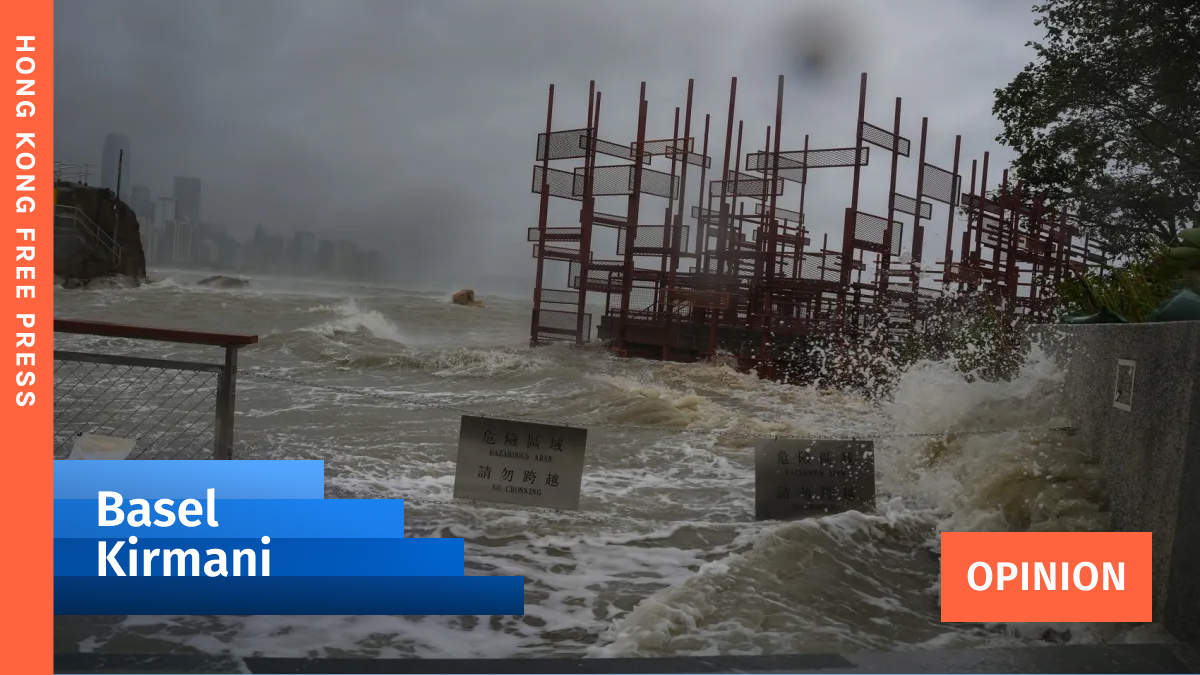By Basel Kirmani
Copyright hongkongfp

Super Typhoon Ragasa has revealed heroes among us.
Among the city’s unsung heroes are the sampan captain who rescued people swept out to sea, the anonymous boilersuit-clad workers who phlegmatically sawed through fallen trees and got our metropolis running again, and the cha chaan teng staff who went to work and served hot meals to hungry residents.
With those heroes risking their own safety to save people and get life back to normal, a question arises: Do we bear some responsibility for putting their lives in peril?
Stronger typhoons, rising sea levels, and storm surges are symptoms of climate change. If we don’t put effort into fixing climate change, our applause for our unsung heroes rings hollow as we knowingly create the conditions that put them at risk in the first place.
That irony is manifested in how people are baking climate change into their operations, only to have those operations at risk from climate change.
I am faintly amused by the case of a company flying dozens of staff from North America to Hong Kong for a conference (mind you, on business class, no carbon offsets) – only to have the conference cancelled due to Ragasa.
Those staff hunkered down in their five-star hotels with only a minibar for company. They flew back – again, on business class, no offsets – having wasted shareholders’ money on, essentially, a resort vacation.
It’s a trite little example, but it neatly illustrates the vicious circle: contributing to climate causes money to be wasted, wasted money eats into sustainability budgets, which means the company contributes more to climate change.
Modifying our behaviour to better withstand the changing climate is one potential solution.
What could that company have done differently? This might manifest as either writing a policy to have online contingency plans for all conferences or investing in conference centres that can better withstand an angrier planet.
At a governmental level, it might involve building more seawalls or investing in more flood management infrastructure. In sustainability circles, that’s called “adaptation.”
Reducing carbon emissions to avoid the planet getting angry in the first place is another option, such as using more telepresence to avoid flights in the first place or purchasing carbon offsets for the flights. In the sustainability lingo, changing to a lower-carbon system is called “mitigation.”
It’s notable that, whether on adaptation or mitigation, money’s going to be spent one way or another.
I know that some people may be thinking, “We had barely two days stuck at home and, thanks to Hongkongers’ indomitable spirit, everything got back to normal within hours. Stop shoehorning climate change into every conversation.”
Yes, Hong Kong’s spirit really is something to be proud of, not least thanks to the boilersuit-clad workers and cha chaan teng staff.
However, 2025 has seen Hong Kong have more typhoons than usual, more black rainstorm signals than usual, and more heat than usual. We can expect 2026 to be hotter, wetter and stormier still, and 2027 even more so.
If we don’t start shoehorning climate into the discourse increasingly urgently, we’re making ourselves less prepared for when the real trouble starts.



